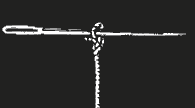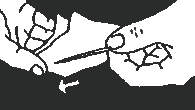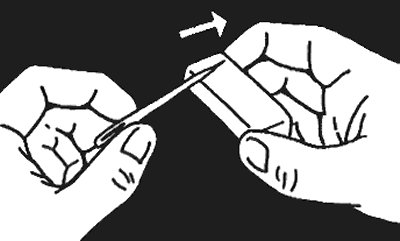Navigation using sticks, stones and the stars.
!-! Shadow Stick !-!

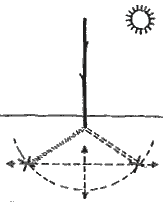
Method (A): Find a flat piece of ground and hold a stick one metre long upright
in the centre of the ground. Mark the tip of the shadow with a stick or stone,
wait 30 minutes and do the same again. A line drawn between the two points will
run from West to East, with the first point being West.
Method (B): This method will take you longer but will be more accurate. Mark
your first shadow tip as in (A) in the morning. Now draw an arc at the distance
from the stick to the shadow tip, using the stick as The centre point (see diagram)
In the afternoon, mark the exact spot where the shadow touches the arc. Now
join the two points to give the West to East line, with the morning point being West.
!-! Using Your Watch !-!


This traditional way of telling the time can only be used if the watch is set to
G.M.T. in the United Kingdom, and to true local time (with no local additions
such as summer time) if abroad. In the Northern hemisphere, hold the watch flat
and point the hour hand towards the Sun, Now bisect the angle between the hour
hand and the figure 12 on your watch to give you a North-South line.
In the Southern hemisphere, hold the watch dial and point the figure 12 towards
the sun. The line that bisects the angle between the hour hand and the figure 12
is the North-South line. Note that this method will become less accurate the
nearer you are to the equator.
!-! Using The Stars !-!
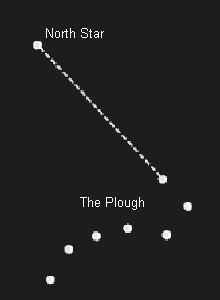

In the Northern hemisphere, the best signpost is the Plough - by following a
line through the two outside stars you will find the North Star(Polaris).
In the Southern hemisphere, the best signpost is The Southern Cross (Crux).
This constellation is not as easy to use or to find as line Plough, but is four
bright stars in the shape of a cross (don't use the False Cross to its right
which has dimmer stars set further apart). Take a line down the cross and also
a line down the two bright stars on its left - where these two lines cross is South.
!-! Natural Signposts !-!
There are a number of ways In which nature can show you the general direction.
such as moss growing more profusely on the Southern side of the tree trunks
in the Northern hemisphere and on the Northern side in the Southern hemisphere.
Take care though these methods are not always accurate.






